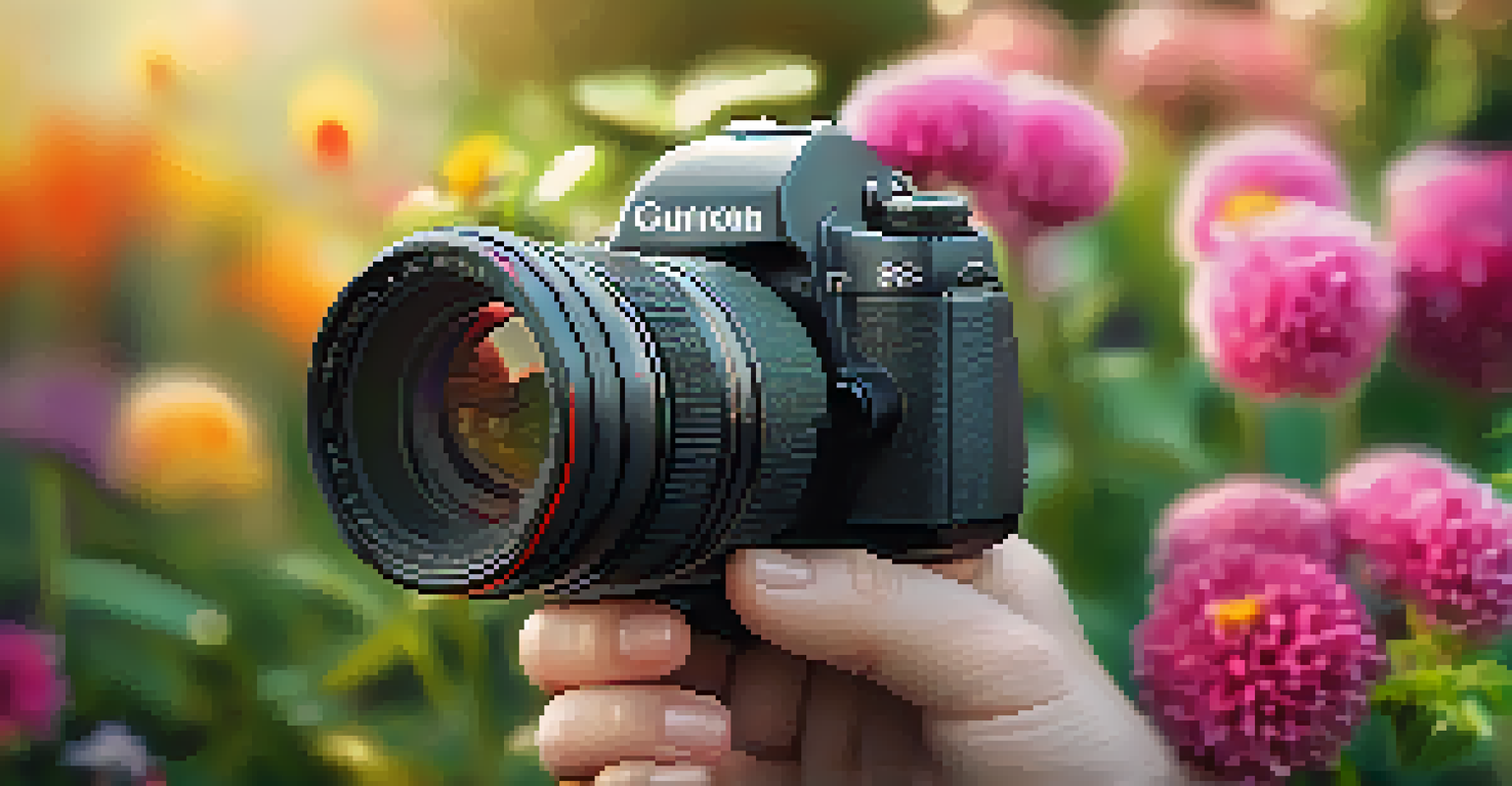The Importance of Raw Files in Digital Photography Editing

Understanding Raw Files: What Makes Them Unique?
Raw files are the digital negatives of photography, capturing all the data from the camera's sensor without processing. Unlike JPEGs, which compress and discard some information, raw files retain every detail, allowing for greater manipulation later on. Think of it like having a blank canvas versus a pre-painted one; the raw file gives you more creative freedom.
The best camera is the one that's with you.
This unique format includes extensive color information and dynamic range, which means you can recover highlights and shadows that would be lost in other file types. When you shoot in raw, you're giving yourself the best chance to create stunning images, especially in challenging lighting conditions. It’s akin to having a high-quality ingredient in cooking; it sets the foundation for a fantastic dish.
However, raw files do come with some considerations, such as larger file sizes and the need for specific software to edit them. But the advantages often outweigh these drawbacks for serious photographers. In short, raw files are the starting point for achieving the best results in digital photography.
Why Raw Files Are Essential for Post-Processing
When it comes to editing, raw files provide unparalleled flexibility. This flexibility allows photographers to adjust exposure, color balance, and contrast without degrading image quality. Imagine trying to adjust the flavor of a dish; if you start with a low-quality ingredient, your options are limited, but high-quality ingredients let you enhance the dish fully.

Using raw files means you can recover lost details in highlights and shadows, which is crucial for creating balanced and dynamic images. This capability is especially beneficial in high-contrast scenes, where a JPEG might leave you with a washed-out sky or lost details in the dark areas. With raw files, you can breathe life back into these elements.
Raw Files Offer Editing Flexibility
Raw files provide unparalleled flexibility in editing, allowing photographers to adjust exposure and color balance without losing image quality.
Moreover, non-destructive editing is a key feature of raw file formats. Any adjustments you make are stored as metadata, meaning the original file remains untouched. This is like having the ability to experiment in the kitchen without the risk of ruining the main dish; you can always revert back to the original if needed.
Creative Control: The Power of Editing with Raw Files
Editing with raw files grants photographers immense creative control over their images. You can experiment with various styles and techniques, from subtle adjustments to dramatic transformations. It’s similar to an artist having a wide array of colors at their disposal; the possibilities are endless.
Photography is the story I fail to put into words.
For instance, adjusting the white balance in a raw file can drastically change the mood of an image. You can transform a cold, blue-toned photo into a warm, inviting scene with just a few clicks. This level of control is particularly useful for photographers aiming to convey a specific emotion or message through their work.
Furthermore, raw files allow you to maintain consistent quality across a series of images. Whether you're editing a single photo or an entire set for a client, you can ensure that each image fits a cohesive style. This is essential in professional photography, where delivering a polished final product is paramount.
Technical Advantages of Using Raw Files
One of the standout technical advantages of raw files is their superior bit depth. This means they can capture a wider range of colors and tones compared to other formats. For photographers, this translates into smoother gradients and more accurate color representation, making a significant difference in the final image.
Additionally, raw files contain more metadata than JPEGs, including camera settings and lens information. This data not only helps during the editing process but also aids in organizing and cataloging images. It's like having a detailed recipe that tracks every step taken along the way, ensuring you can replicate or refine your process later.
Dynamic Range Enhances Image Quality
Raw files excel in capturing a wider dynamic range, retaining details in both highlights and shadows for more striking photographs.
Ultimately, the technical benefits of raw files enhance both the editing experience and the final product. By providing more data and options, they empower photographers to push their creative boundaries and produce images that truly resonate with viewers.
The Importance of Dynamic Range in Photography
Dynamic range refers to the difference between the lightest and darkest parts of an image. Raw files excel in capturing a wider dynamic range, allowing photographers to retain detail in both highlights and shadows. This characteristic is vital for creating depth and dimension in photographs, especially in scenes with high contrast.
For example, when photographing a sunset, a JPEG might lose detail in the bright sky, rendering it as a flat, washed-out area. In contrast, a raw file allows you to recover those vibrant colors, showcasing the stunning hues that make sunsets magical. It’s like capturing the full spectrum of a rainbow rather than just a few scattered colors.
By utilizing the dynamic range of raw files, photographers can create more visually striking images that draw viewers in. This capability can transform a simple photo into a breathtaking piece of art, emphasizing the beauty of the moment captured.
Workflow Considerations When Using Raw Files
Adopting raw files into your photography workflow requires some adjustments, particularly in software and storage. Editing raw files typically necessitates specialized software like Adobe Lightroom or Capture One, which can feel like learning a new language at first. However, once you get the hang of it, you'll find that these tools unlock a new level of editing possibilities.
Storage is another factor to consider, as raw files take up significantly more space than JPEGs. This means you may need to invest in larger hard drives or cloud storage solutions. Think of it as needing a bigger pantry to accommodate all your new ingredients; it’s worth it for the quality you gain.
Common Misconceptions About Raw Files
Many believe raw files are only for professionals or too complicated, but they are beneficial and accessible for photographers at all levels.
Despite these considerations, the benefits of incorporating raw files into your workflow are undeniable. By embracing the raw format, you're setting yourself up for success, allowing for greater creativity and superior final results.
Common Misconceptions About Raw Files
There are several misconceptions surrounding raw files that can deter photographers from using them. One common myth is that raw files are only for professional photographers, but that’s far from the truth. Amateur photographers can also benefit greatly from the flexibility and quality that raw files provide, making it an excellent choice for anyone looking to improve their photography.
Another misconception is that raw files are too complicated to work with. While they do require specific software and a bit of a learning curve, the investment in time is well worth it. Once you understand the basics, you'll find that editing raw files is intuitive and rewarding, much like mastering a new skill.

Lastly, some believe that raw files are unnecessary for casual photography, but even everyday moments can be enhanced using raw. By capturing those moments in raw, you have the ability to improve and adjust them later, ensuring that even the simplest photos can shine.